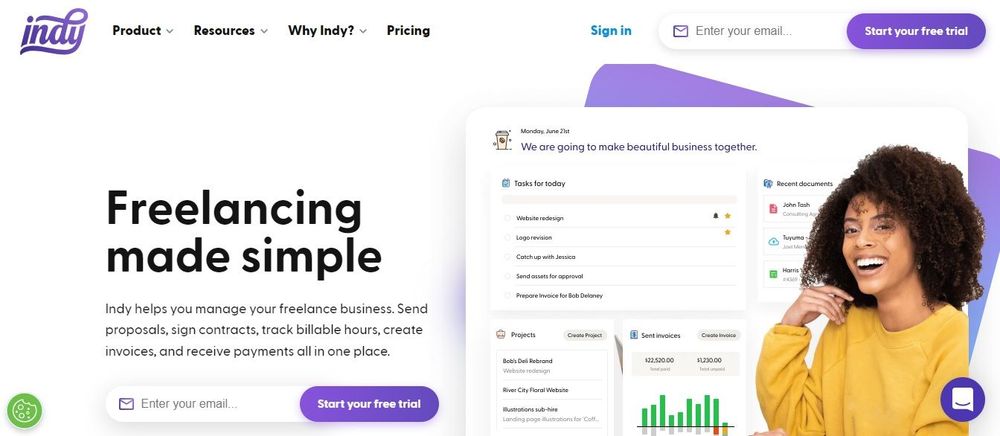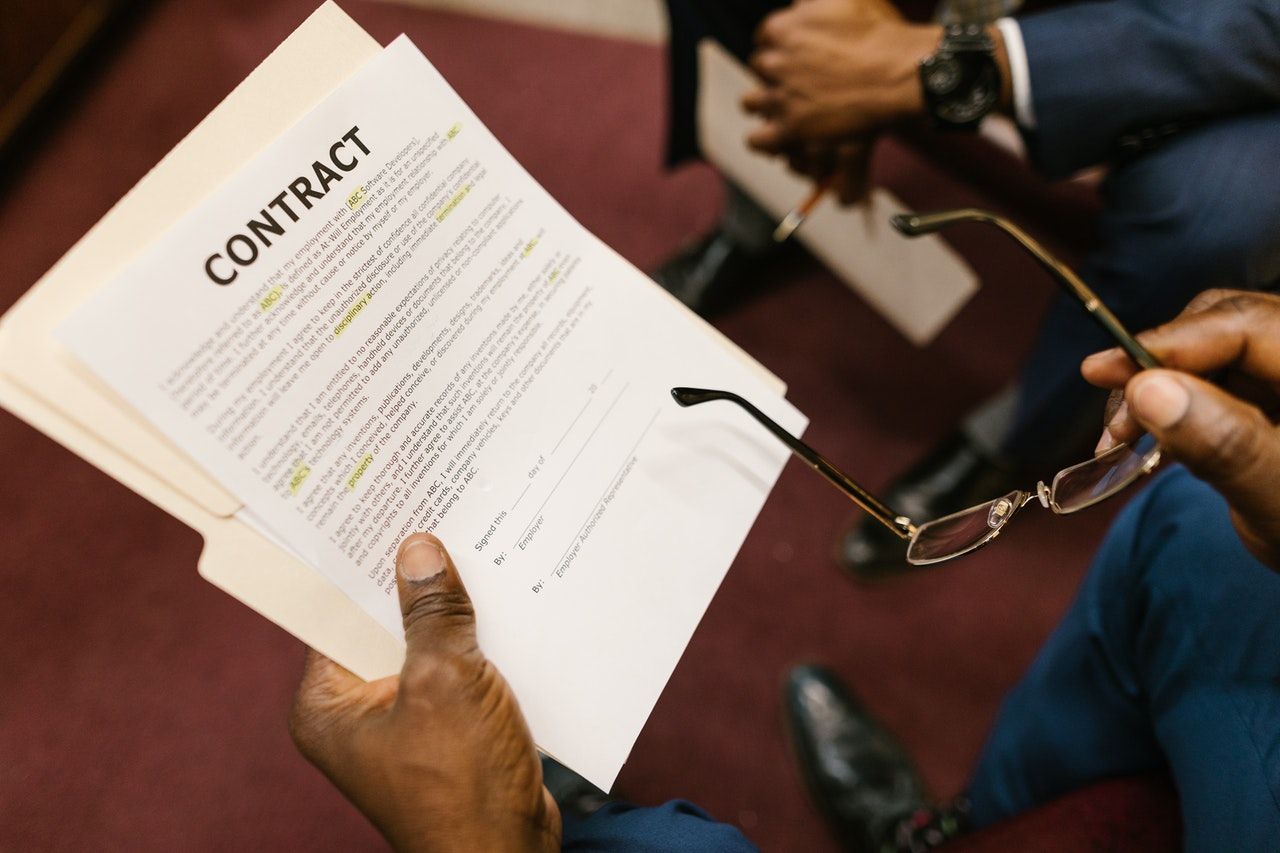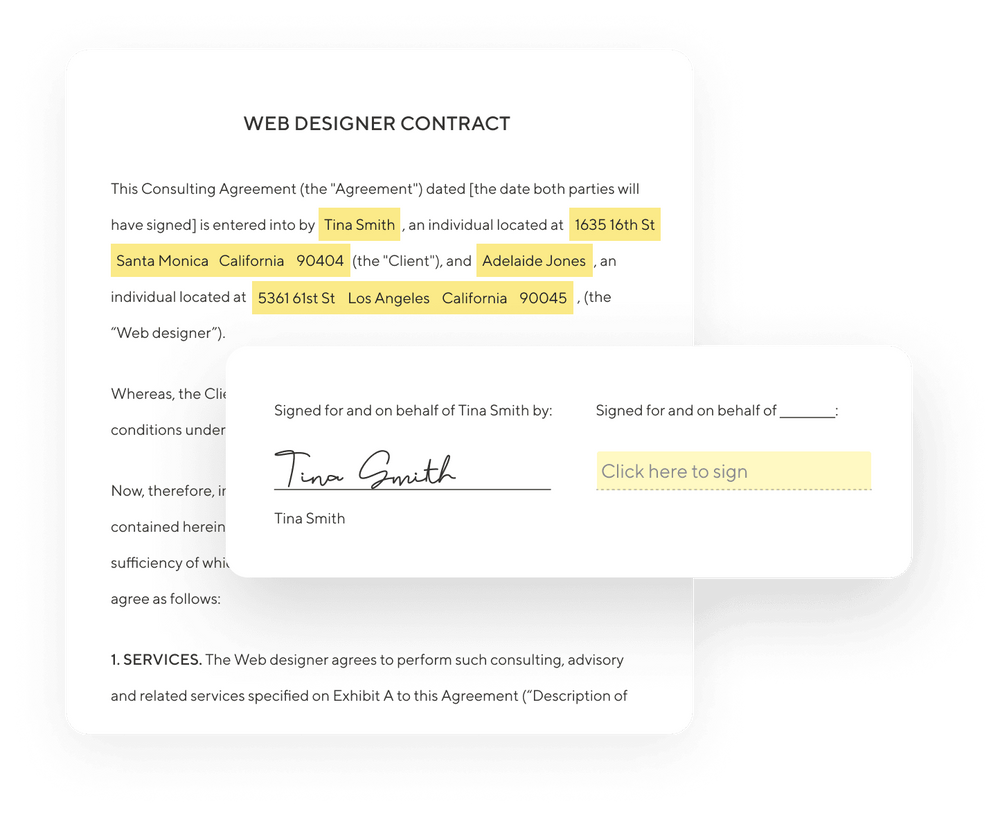Freelancers love retainer agreements because they provide stable income. There is great comfort in knowing the work will be available, and the monthly retainer fee will go into your bank every month. Retainer contracts can be a little difficult to get started with, so let's talk about how you can get into one if you think it's a good idea.
Here's what we'll cover:
- What a retainer is and why you should use one
- How to calculate your retainer fees
- What to include in your retainer agreement
- A few ideas to help win the client's business
Ready to get started?
What is a retainer agreement?
A retainer agreement is an advance payment agreement. It is an agreement where the client pays an upfront advance fee in exchange for an agreed level of service or access to consulting services.
Retainer clients can provide consistent income for freelancers while they receive a guaranteed amount of work or time with the consultant.
Why use retainer agreements?
There are some significant reasons freelancers should use retainer agreements:
- Working on the same retainer contract on an ongoing basis builds quality and efficiency because your expertise in the client's business needs will grow.
- Regular work on retainer saves you time trying to hunt for new clients or go through a lengthy sales process.
- The guaranteed income of retainer agreements is a big help to cash flow because it is income you can rely on and arrives regularly.
A retainer relationship is also good for your clients for a few reasons:
- The retainer fee is usually lower than comparable hourly work or fixed project payments.
- Retainer fees can be included in the fixed monthly expenses of a business. This makes financial planning easier for current work and future projects.
- Monthly retainers also build trust and efficiency from the client's side because the freelancer may be able to anticipate business needs and work proactively.
These are great reasons you can use to demonstrate the ongoing value of a retainer agreement. Of course, a big question is how much they cost.
Next, let's tackle that question.

How to calculate the fixed monthly fee
There must be dozens of different ways to calculate your fees. Some of them are no better than random guesses. For a little more useful way, we recommend a simple two-step process. You can use this to figure out your annual fee and what you can charge a new client for future services.
Calculate your annual salary
First, you should decide what a reasonable annual income is for you. Then, you can divide this by the number of hours you want to work. This will give you your hourly rate, which you can use as the basis of your retainer fee for new clients.
Here's an example:
- You're a graphic designer and want an annual income of $72,000.
- You want to take four weeks off work every year and only work 30 hours per week.
- So, divide $72,000 by 48 working weeks. This means your target is $1,500 per week.
- Since you only want to work 30 hours per week, you should charge $50 per hour.
As you're doing this, be sure to include expenses like taxes, business equipment, software subscriptions, insurance, and so on. You may also want to intentionally factor in more money for the occasions when scope creep happens. Scope creep is when a client extends the scope of the work beyond what you both originally agreed upon. With scope creep, you face the possibility of doing extra work without any extra pay.
Estimate the amount of time you will spend on one client
Now that you have your hourly figure, the next step is to estimate the amount of time you'll spend on the retainer work on a weekly basis or a monthly basis. This will be the fee you charge to that specific client.
To make selling retainers easier, some freelancers offer a discount for retainer work versus hourly work or project work. This will be attractive to new clients, especially if you can use a higher hourly rate as an anchor pricing technique.
The 7 best practices for creating monthly retainer contracts
We love the predictable revenue coming in on a monthly basis. We don't love the potential for a retainer agreement that goes wrong, sours the retainer relationship, and traps you in a bad situation during a long-term project.
So, let's cover some ways you can create agreements that are genuinely helpful to both you and your retainer clients.
1. Create a clear retainer agreement
The first thing you should do with a new client is create a good contract. We're amazed at how most freelancers who are new to independent work don't use contracts. Here are a few things to include in your contracts:
- Accurate information about you and your client
- A super clear summary of the ongoing work you will do for the client
- A section dedicated to how much, how often, and the method the client will use to pay you for your services.
- An extended amount of space given to describing the work in detail to help avoid scope creep or misunderstandings.
- A signature line
These things will help your contract cover the necessary details. Now, we'll talk through a few more ways to make your retainer agreements work for everyone.
2. Plan for extra work or more services
Think about your past clients for a moment. How often did they ask for a few hours extra to finish something or make some change at the last minute that you had to spend time accommodating? With these things in mind, you'll want to include provisions for these events in your contracts for other clients and new projects.
Here are some options you might want to plan for:
- Extra work requested by the client should be added to the invoice in a way that makes sense to you and the client.
- You may want to include a statement regarding illness or incapacity. If you can't work for a week, can you subcontract the work or move some deadlines? You'll want to create this breathing room before you actually need it.
- Big changes to your business or the client's needs might mean you need a new contract to provide the most value. You might think of things that would trigger this happening.
3. Offer service tiers to potential clients
You could win more clients and increase your income by offering services in a tiered approach. This means having a low, middle, and upper tier of your services. Here's an example a blog writer might use for their clients:
- Bronze tier: 1 article per week for $200
- Silver tier: 2 Articles per week for $350
- Gold Tier: 4 Articles per week for $600
The benefit of this approach for the writer is they can write more articles. To the customer, the middle option will be very attractive because of the technique known as anchor pricing. Even though they will be paying more, the customer is likely to see the value in this package.

4. Define payment terms
You should clarify the payment terms for your retainer agreement. Many freelancers use these options:
- A down payment before work commences if the first retainer is at the end of the first month.
- A monthly payment due on a specific date each month, such as the 1st of the month.
- A lump-sum payment for any equipment or extra outlays, such as venue hire for photographers.
While defining your payment terms, you should also use a statement such as net 30 or net 7 to clarify how quickly the clients should pay an invoice once it arrives.
5. Use a monthly report for reassurance
You should use a system to send a regular report to each of your clients. This gives them space for user feedback and helps them understand the value you are giving to their business.
Here are some items to include in your monthly report:
- Specific project items delivered during the month
- A summary of hours worked if the project is based on hourly payments
- Statement of any amounts paid during the month for the agreement
- Overall progress summary of the project
These items, and others you may think of, will keep your clients in touch on an ongoing basis and build confidence in your work.
6. Check your retainer agreement occasionally
Every quarter or twice a year, check your agreements to see if they are working for you and your client. While they may be good for cash flow, it is possible to get locked into agreements that limit your business or harm your client.
How could a retainer agreement limit your business?
Simple. Focusing too much on your current work may keep you from finding more lucrative work, a more strategic client, or more time for a holiday. Your income should increase over time. If you get locked into an agreement that consumes all your resources, then you may not have the space or capacity to take the next step in building your business.
How could a retainer contract hurt your client?
Competition is usually good for business. It is possible that your work for a client becomes routine and less creative than you wish. So your client might not be getting your best efforts because you have been working with them for a while. Don't fire them! Just realign the project in a way that provides fresh value for the client and a fresh challenge for yourself.
7. Establish an offboarding strategy
Sometimes, you need to leave a client. How do you know it's time to do so? We could write an entire article about this, but here are some tips:
- You are no longer enjoying the work, and you know your quality is suffering as a result. Don't deliver bad work. Just move on.
- The scope of the project has increased so much that delivering success is becoming impossible. Redefine the project or release the client.
- The relationship has soured for some reason and cannot be repaired. Everyone may not be your friend, but you should get out of business relationships that feel like torture.
If you've reached one of these points, you need a strategy to get out of your contract. Of course, the simplest way is to include this in the agreement you send to a potential client. A simple break clause allowing you to give 30 days' notice or a longer period is sufficient.
Leaving a client on a good note is possible. Here are a few things to do:
- Be honest about the reasons, even if they are negative. Just be clear and professional. Ultimately, everyone knows business relationships come and go.
- Provide plenty of notice, even beyond the amount in your agreement, if possible.
- Deliver everything you should before ending the contract. This is especially true if the customer paid in advance. Don't leave them hanging or make them demand a refund.
Now that you know these best practices, let's talk about how to negotiate an agreement in the first place.
How to negotiate a retainer agreement
Negotiating a retainer agreement is a discussion between one party and the other, where the goal should be the same: providing great services at a valuable price. If you keep this in mind, you'll be an empathetic negotiator who wins a lot of new clients because they will respect how you try to bring value to them.
Speaking of value, let's start with that as the beginning point for negotiations.
Prove your value to your client
No business is going to continue paying for services that don't provide value. Smart businesses won't even start! So, demonstrate how your services will affect the business positively. Here are a few pointers:
- Understand the key performance indicators (KPIs) for your client and industry. Use your history with clients to show you can deliver improvements on these metrics.
- Use your project plan to show clients what you will do to help their business. Don't be vague, but provide real details.
Your retainer negotiations and project discussions are points where you can show your expertise. The client will pay attention to your responses and suggestions. So, use these interactions to position yourself as an expert.
Offer a monthly retainer fee discount
One way to boost your negotiating power and sweeten the deal is to offer a retainer fee discount. Without selling your services too low, you can offer a small discount for regular payments instead of a single project fee.
You might have to help your client understand how this will help them. As an example, let's think about someone who writes blogs.
For six months, their client has ordered blogs occasionally. The total over six months amounts to 12 blog posts. This writer could offer a six-month retainer contract with a 10% discount for the same twelve blog posts. This would improve their cash flow without reducing their profits.

Pitch your retainer services
Some people forget to pitch their retainer services, which could cost them clients and opportunities. Whenever you are talking with a new client, try to imagine if the work can be converted to a retainer job. It's not always possible, but many jobs that occur intermittently can be converted to retainer work.
Here's how to tell:
- If the project or relationship could continue for more than a month, it may be ideal for retainer work.
- If the client already knows you and trusts your work, then you could pitch a long-term contract to them.
- If the deliverables are consistent over a period of time, such as six months, but inconsistent over the short term, then you might pitch a retainer as a way of guaranteeing your cash flow and their access to your services.
Offering a retainer also gives you a chance to upsell your services to your clients. For example, if we think again about that writer offering a retainer to an inconsistent client, the writer could offer to develop a publishing plan. For a small extra fee, spread over the length of the retainer, the writer can offer a valuable service the client may not have even considered.
Plan end dates for your clients
Planning to end your contract is always a good idea. This might seem contradictory, so let's think of a few reasons why it may be helpful to have a fixed end in mind for every contract.
- An end date gives you an easy out if the work has become difficult or unprofitable.
- The end of a contract is a good time to renegotiate rates or scope to increase your revenue.
- You might need points in the year when you can rebalance your workload.
For all these reasons, include an end date in your contracts. Clients don't mind this because it is a common practice.
How can Indy help?

Indy offers three tools that can help you propose, write, and invoice your clients for retainer agreements. Indy's Proposals tool is a simple document builder you can use to write and send professional proposals quickly. Indy's Contracts tool is similar but also comes with contract templates and an integrated e-signature function. Indy's Invoices tool gives you the ability to create professional invoices and offer multiple payment options to your clients.
Visit Indy's homepage to read more about these tools.



